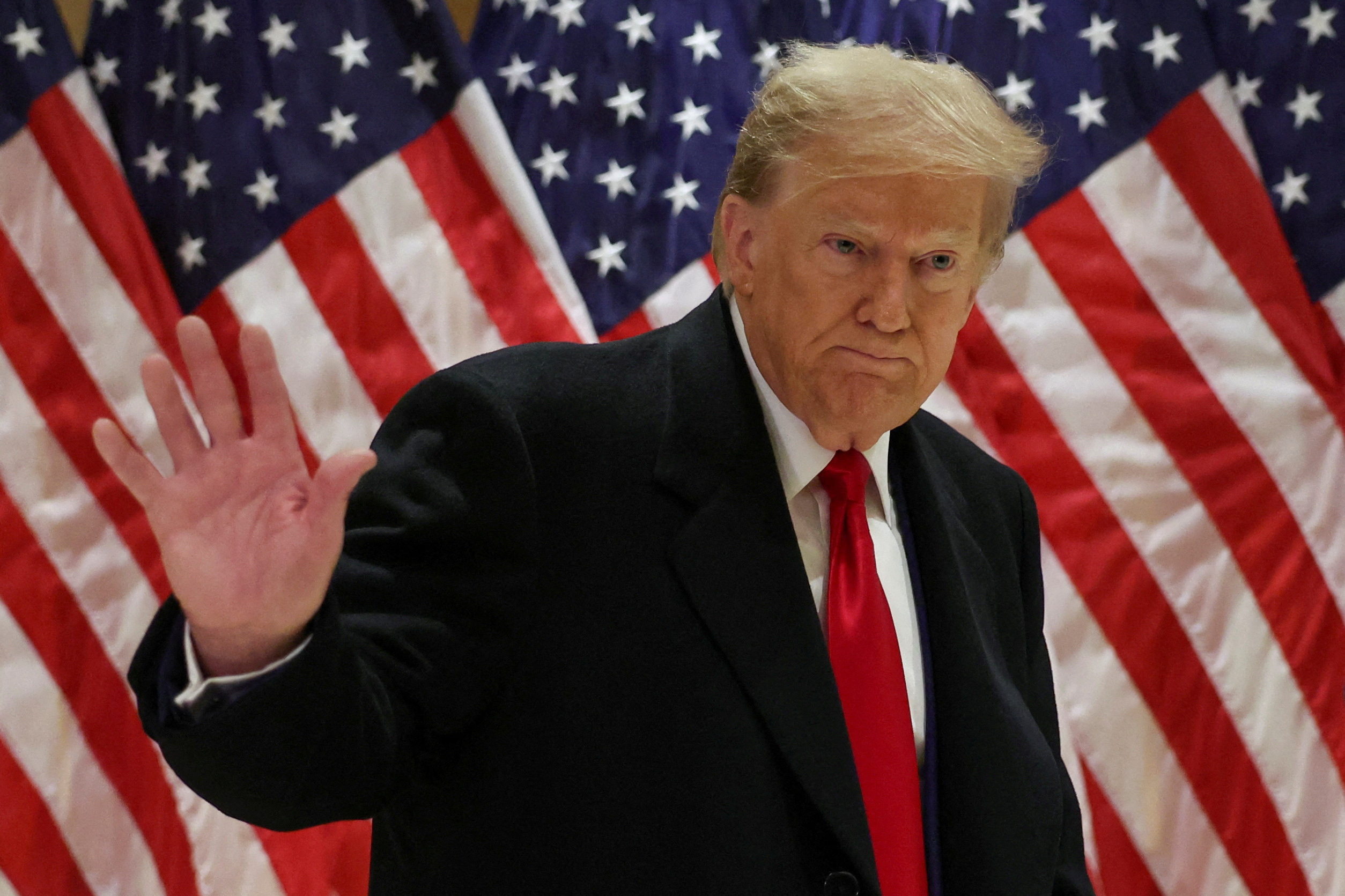The Trump Tariffs: A Legal Showdown

Table of Contents
The Legal Basis of the Trump Tariffs: Presidential Authority and National Security
The legal authority for the Trump tariffs largely stemmed from Section 301 of the Trade Act of 1974. This act grants the President significant power to take action against foreign countries engaging in unfair trade practices.
Trade Laws and Presidential Authority
Section 301 empowers the President to:
- Investigate unfair trade practices by foreign governments.
- Impose tariffs or other trade restrictions as remedies.
- Negotiate trade agreements to address unfair practices.
However, this power is not absolute. Case law, such as past challenges to presidential trade actions, highlights limitations. The President must demonstrate that the targeted practices are indeed unfair and harm US interests. Arbitrary or discriminatory tariff imposition is legally questionable.
National Security and Economic Considerations
The Trump administration frequently justified its tariffs on national security grounds, arguing that certain imports threatened vital industries like steel and aluminum. This invoked a broader interpretation of national security, extending beyond traditional military considerations.
- Steel and Aluminum Tariffs: These tariffs, imposed under Section 232 of the Trade Expansion Act of 1962, were heavily debated. The administration argued these industries were crucial to national defense, even if the link was tenuous for some.
- China Tariffs: Many tariffs targeted China, citing alleged intellectual property theft and forced technology transfer as national security threats. The economic consequences included increased prices for consumers and retaliatory tariffs from China, disrupting global supply chains. The definition of "national security" in this context remained a contentious point.
Legal Challenges to the Trump Tariffs: WTO Disputes and Domestic Lawsuits
The Trump tariffs faced significant legal pushback both internationally and domestically.
WTO Disputes and Challenges
Numerous countries challenged the tariffs within the World Trade Organization (WTO), arguing they violated WTO rules against discriminatory trade practices.
- WTO Rulings: Several WTO panels ruled against the US, finding some tariffs to be inconsistent with WTO obligations. These rulings, however, often lacked enforcement mechanisms, highlighting the limitations of international trade law.
- Retaliatory Tariffs: Other countries retaliated by imposing their own tariffs on US goods, escalating the trade war and further disrupting global commerce. The US response to adverse WTO rulings varied, often involving appeals or a refusal to comply fully.
Domestic Legal Challenges
Domestic legal challenges to the Trump tariffs were less frequent but still significant. These lawsuits often argued that:
- The tariffs exceeded the President's constitutional authority.
- The tariffs violated specific domestic laws related to fair trade practices.
- The tariffs caused undue economic harm to specific industries or consumers. While many challenges were unsuccessful, they highlighted the ongoing debate surrounding the balance between executive power and legal constraints in trade policy.
The Long-Term Impacts of the Legal Battles: Trade Relations and Domestic Repercussions
The legal battles surrounding the Trump tariffs left a lasting mark on global trade and the US economy.
Trade Relations and the Global Economy
The tariffs and subsequent legal challenges significantly strained US relationships with key trading partners. This led to:
- Increased trade protectionism globally.
- A decline in international trade cooperation.
- Disruptions to established supply chains. The long-term impact on global trade agreements and alliances is still unfolding.
Domestic Industries and Consumers
The effects on domestic industries and consumers were varied and complex:
- Some industries, like steel, experienced short-term benefits from reduced import competition.
- However, many other sectors faced higher input costs, leading to price increases for consumers.
- The long-term impact on industrial competitiveness remains a subject of ongoing debate. Some argue the tariffs hampered innovation and efficiency, while others believe they helped safeguard crucial industries.
Understanding the Legacy of the Trump Tariffs
The Trump tariffs represent a significant turning point in US trade policy, marked by aggressive unilateralism and extensive legal challenges. The legacy includes strained international relations, disrupted global supply chains, and lingering questions about the appropriate balance between presidential authority and legal constraints in trade matters. The economic consequences continue to be debated, with long-term effects still unfolding.
To fully grasp the implications of these policies, further research into specific case studies, WTO rulings, and economic analyses is crucial. Exploring resources like the WTO website, academic journals on international trade law, and government reports on trade policy will provide a more comprehensive understanding of the Trump tariffs and their lasting impact.

Featured Posts
-
 Tongas Victory Securing A Place In The 2025 Ofc U 19 Womens Championship
May 02, 2025
Tongas Victory Securing A Place In The 2025 Ofc U 19 Womens Championship
May 02, 2025 -
 Record Low Temperatures In Tulsa Delay Snowmelt
May 02, 2025
Record Low Temperatures In Tulsa Delay Snowmelt
May 02, 2025 -
 Chocolat Pour Bebe Offre Speciale De La Boulangerie Normande
May 02, 2025
Chocolat Pour Bebe Offre Speciale De La Boulangerie Normande
May 02, 2025 -
 Xrp Price Jump Trumps Post Impacts Ripple
May 02, 2025
Xrp Price Jump Trumps Post Impacts Ripple
May 02, 2025 -
 Cotswolds Mansion Paint Job Lands Daisy May Cooper In 30 000 Legal Fight
May 02, 2025
Cotswolds Mansion Paint Job Lands Daisy May Cooper In 30 000 Legal Fight
May 02, 2025
Latest Posts
-
 Joseph Critique De La Nouvelle Serie Policiere De Tf 1 Avec Lucien Jean Baptiste
May 03, 2025
Joseph Critique De La Nouvelle Serie Policiere De Tf 1 Avec Lucien Jean Baptiste
May 03, 2025 -
 Serie Joseph Tf 1 Vaut Elle Le Coup D Il Critique Et Avis
May 03, 2025
Serie Joseph Tf 1 Vaut Elle Le Coup D Il Critique Et Avis
May 03, 2025 -
 Signature D Un Accord D Aide Financiere Pour Des Projets A Maurice
May 03, 2025
Signature D Un Accord D Aide Financiere Pour Des Projets A Maurice
May 03, 2025 -
 Joseph Sur Tf 1 Lucien Jean Baptiste Un Columbo A La Francaise Notre Verdict
May 03, 2025
Joseph Sur Tf 1 Lucien Jean Baptiste Un Columbo A La Francaise Notre Verdict
May 03, 2025 -
 Nouvelle Aide Financiere Pour Maurice Les Details De L Accord Signe
May 03, 2025
Nouvelle Aide Financiere Pour Maurice Les Details De L Accord Signe
May 03, 2025
